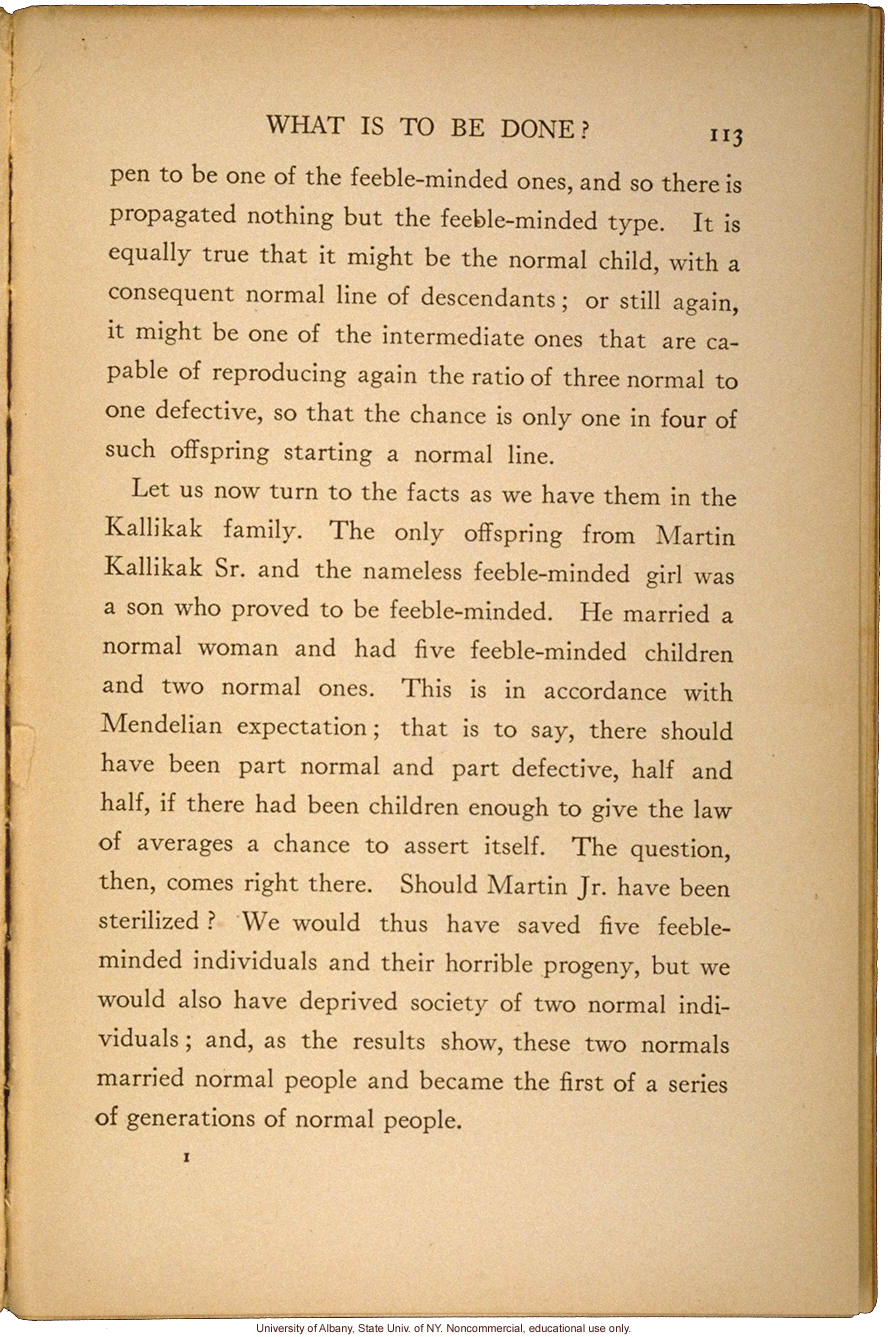What is to be Done? 113
pen to be one of the feeble-minded ones, and so there is propagated nothing but the feeble-minded type. It is equally true that it might be a normal child, with a consequent normal line of descendants; or still again, it might be one of the intermediate ones that are capable of reproducing again the ratio of three normal to one defective, so that the chance is only one in four of such offspring starting a normal line.
Let us now turn to the facts as we have them in the Kallikak family. The only offspring from Martin Kallikak Sr. and the nameless feeble-minded girl was a son who proved to be feeble-minded. He married a normal woman and had five feeble-minded children and two normal ones. This is in accordance with Mendelian expectation; that is to say, there should have been part normal and part defective, half and half, if there had been children enough to give the law of averages a chance to assert itself. The question, then, comes right there. Should Martin Jr. have been sterilized? We would thus have saved five feeble-minded individuals and their horrible progeny, but we would also have deprived society of two normal individuals; and, as the results show, these two normals married normal people and became the first of a series of generations of normal people.
I
[end]


